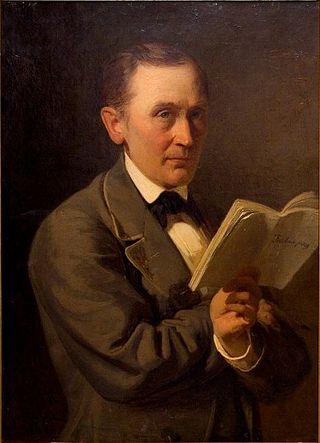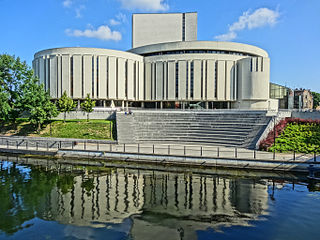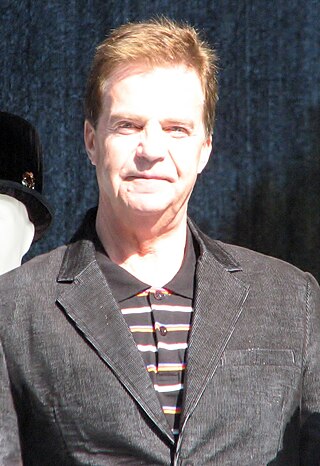
Malmö Opera is an opera house in Malmö, Sweden. An opera company of the same name presents seasons of opera in this house.

Georg Ots was an Estonian baritone who besides opera was known as a performer of popular songs. He sang at the Estonian National Opera from 1951 to his death in 1975. He gained wider recognition with his roles at the Bolshoi Theatre, particularly with his lead role in Eugene Onegin. He was also celebrated for his interpretation in a musical film Mister Iks, based on Imre Kálmán's operetta Die Zirkusprinzessin.

Teet Kask is an Estonian choreographer.

Vanemuine is a theatre in Tartu, Estonia. It is the first Estonian-language theatre. Stemming from the Vanemuine Society (1865), the theatre's first performance was Lydia Koidula's Saaremaa Onupoeg at the society's fifth anniversary. In subsequent years, Vanemuine has expanded to include a symphony orchestra and ballet company, while its repertoire has included a range of operettas and music theatre through operas and dramas. Under Karl Menning, the theatre served a vocational purpose, with a great emphasis on educating future talent. Subsequent directors prioritized entertainment value, while Kaarel Ird—who led Vanemuine for more than forty years—oversaw a blend of genres as well as tours of the Soviet Union. In recent years, content has varied extensively.
The Estonian Academy of Music and Theatre began as a mixed choir of the Estonia Society Musical Department (EMD) on the eve of World War I. The assembly of the Estonia Society created the Tallinn Higher Music School on November 17, 1918. The opening ceremony took place on September 28, 1919. In 1923 the educational institution was renamed the Tallinn Conservatoire. In 1938 the State Drama School was opened. In 1993 the school was renamed the Estonian Academy of Music. In 1995 the Drama Faculty was renamed the Higher Theatre School.

Estonia Theatre is an historic landmark building in central Tallinn, the capital city of Estonia. It houses the Estonian National Opera and the Estonian National Symphony Orchestra.

The culture of Estonia combines an indigenous heritage, represented by the country's Finnic national language Estonian, with Nordic and German cultural aspects. Over the centuries, the culture of modern Estonia has been significantly influenced by that of the Germanic-speaking world. Due to its history and geography, Estonia's culture has also been influenced by the traditions of the Baltic Germans and Scandinavians as well as the neighbouring Baltic, Slavic, and Finnic peoples.
The theatre of Estonia dates back to 1784, when August von Kotzebue founded an amateur theatre company in Tallinn. Most of the plays at the time were comedies for the amusement for local Baltic German nobility. In 1809 a professional theatre company was established, with its own building in Tallinn, the Tallinna saksa teater. The repertoire was mostly in German but plays in Estonian and Russian were also performed.

Erki Pehk is an Estonian conductor and artistic director of opera music festival PromFest.

The Latvian National Opera and Ballet (LNOB) is an opera house and opera company at Aspazijas boulevard 3 in Riga. Its repertoire includes performances of opera and ballet presented during the season which lasts from mid-September to the end of May. During a typical season, LNOB presents almost 200 performances, including, on average, 6 new productions. The largest is the Great Hall which houses 946 seats, while the smaller ones – the New Hall, the Dress Circle Hall (Beletāžas zāle) and the Red Hall – have a maximum seating capacity of 338, 170 and 100 respectively. LNOB employs a total of approximately 600 people. The building is located on the bank of the Riga Canal, near the Freedom Monument. As of 5 November 2019, the chairman of the board is Egils Siliņš, a world renowned opera singer. The chief conductor since 2013 is Mārtiņš Ozoliņš who is also an associate professor at the Jāzeps Vītols Latvian Academy of Music. The artistic director since 1993 is Aivars Leimanis.

Giedrius Antanas Kuprevičius is a Lithuanian composer and music educator.

Jaan (Joann) Hargel was an Estonian conductor, music teacher, oboe and flute player.

The Opera Nova is an opera house in Bydgoszcz, Poland. It was established in 1956, and it also plays the role of a musical theatre. It is one of the 10 opera houses in Poland and the only one of this size in the Kuyavian-Pomeranian Voivodeship. Opera Nova also welcomes the scene of the Bydgoszcz Buratino Puppet Theatre.
Lia Laats was an Estonian stage and film actress whose career spanned over forty years.

Marie-Elisabeth "Betty" Kuuskemaa was an Estonian stage and film actress whose long career spanned over sixty years.
Sophie Sooäär was an Estonian stage, television, and film actress and singer and dancer.

Tõnu Kilgas was an Estonian singer (baritone) and stage, film, voice, and television actor.
Asta Vihandi was an Estonian opera and operetta soprano, stage and film actress, and dancer whose career began in 1947 at the age of eighteen. Vihandi's longest engagement was at the Estonian National Opera, which lasted from 1950 until 1985. Later in life, she worked as an administrator for the National Philharmonic of the Estonian SSR.

Väino Aren was an Estonian ballet dancer, actor, and operetta singer.

A national school of opera in Ukraine first emerged during the last third of the 19th century, and was based on the traditions of European theatre and Ukrainian folk music. The first opera by a Ukrainian composer was Maxim Berezovsky's Demofont, based on an Italian libretto, which premiered in 1773. The oldest opera in the Ukrainian musical repertoire, A Zaporozhye Cossack on the Danube by Semen Hulak-Artemovsky, was written in 1863. The composer Mykola Lysenko, the founder of Ukrainian opera, composed a number of works, including Natalka Poltavka, Taras Bulba, Nocturne, and two operas for children, Koza-dereza and Mr Kotsky.
















